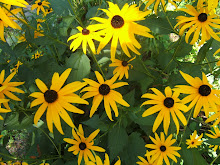A Story
When Baby Came
Lisa sighed gently as Peter brushed her hair, stroke after stroke. His hands tickled her neck as he gathered her hair together to make a ponytail. He playfully swung her hair and then kissed her on the cheek. She turned to him, and drew him into a full kiss. They had always been deeply in love but now that she was pregnant, they felt even closer. Peter rested his hand lightly on her swollen belly and smiled when he felt the baby's foot pressing outwardly. They were already connecting.
A few weeks later, Lisa went into labour. Peter, who had attended pre-natal classes with her, knew to massage her back. He sang her favourite songs and wiped her brow with a cool cloth. He told her how much he loved her and how special it was to have a baby with her. When she was finally delivering, he held her hand and never flinched when she squeezed with all her might. Lisa was so thankful to have such a devoted husband.
Baby made a grand entrance, crying heartily and turning a bright rose red. Lisa cuddled her and laughed at her comical face. Peter, on the other hand, stared at Baby mesmerized, totally enraptured with her.
That was the beginning of the competition between Lisa and Baby.
The summer before last I got these calla lily bulbs for free at the end of the season in August. I potted them up and they grew a bit before the frost. I overwintered them in their pot inside, basically just neglected them in the basement. Last summer, I put the pot outside and they grew nice leaves but no flowers. Finally this summer, I have blooms. Very pretty and worth the wait. They like a sunny location with ample moisture in the growing season.
Gardening is always full of surprises. This year three native rudbeckia (hirta) have popped up around the garden. They are a biennial plant unlike the usual perennial rudbeckia (goldstrum). Their leaves are narrow and hairy. I guess some bird dropped their seeds in our yard. I'm enjoying having them.
Astrantia is such an unusual flower - spiky yet soft. The white ones have subtle colour variations with touches of green and pink here and there. They form a nice big clump but do not wander. They prefer a half-shade location and adequate moisture. A mulch around them to keep the soil from drying out is preferable.
Some of my favourite hostas, especially the green one with buttery yellow centres. I don't remember what varieties they are. In front of them are some cherry-bell campanula which for some reason decided to make a nice ground cover this year in an area that I have struggled to find a plant for. Campanulas in general like sun but also adequate moisture. These ones are flopping because they are not in full sun. However, they are growing well because the soil is not drying out.
To transition from the hot orange campion to the cool pink lily, I planted in a couple of miniature red roses. The red serves as a bridge colour.
Purple-flowering maple has attractive flowers and will later make red raspberry-like fruit. It is native to my area (zone 4). It makes a shrub up to 5' tall. Sounds nice? Not really. It is very aggressive and I would gladly do without it. I spend considerable time trying to root it out of my gardens. It is sometimes sold as a garden plant but it is a real thug. I didn't plant it in my yard - it was already here as it is a native plant. The bees like it though and birds will eat the edible, but not tasty, fruit.


















